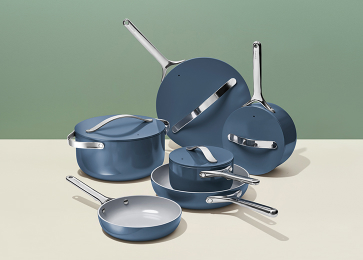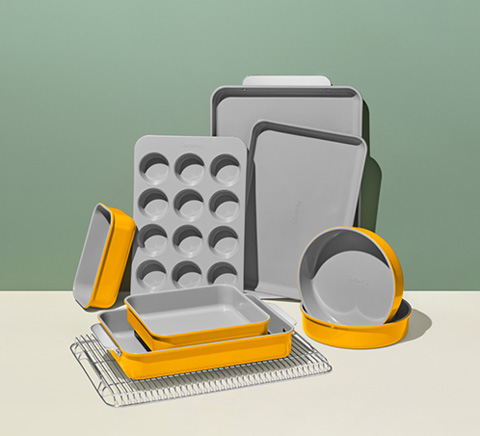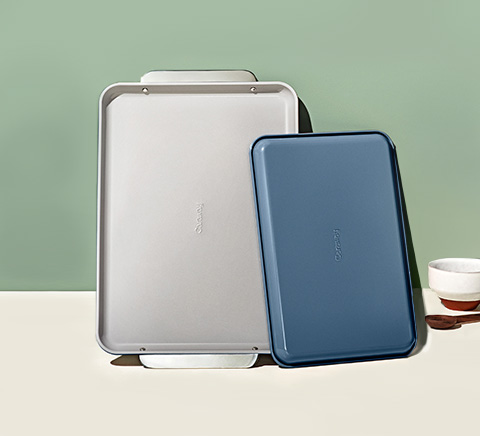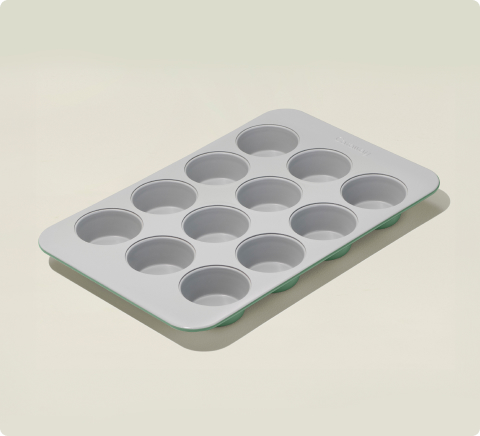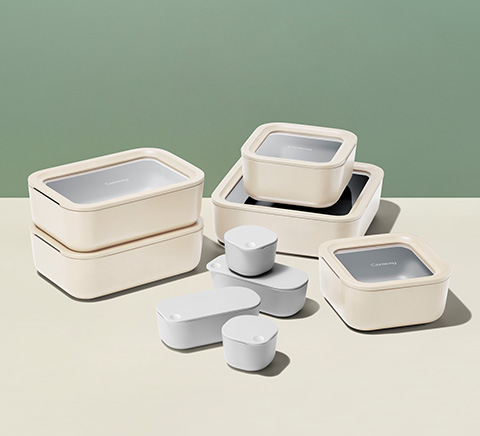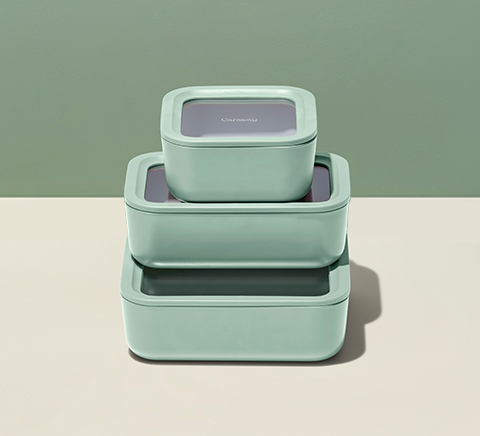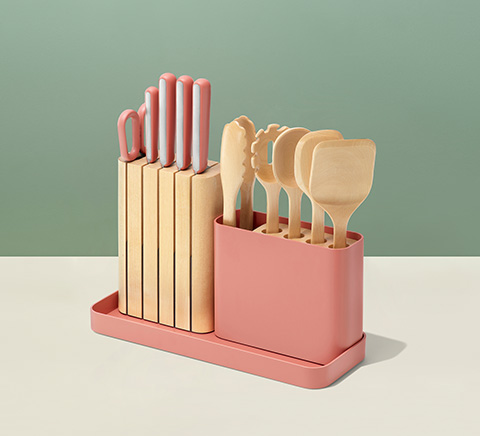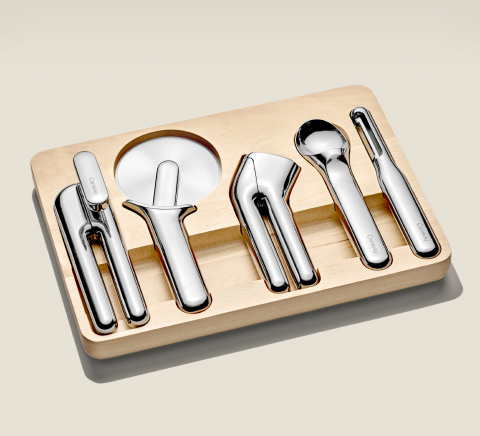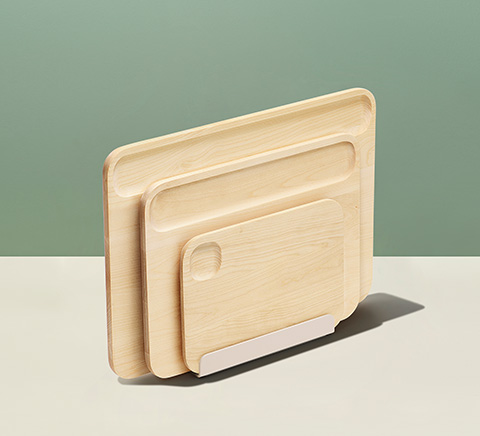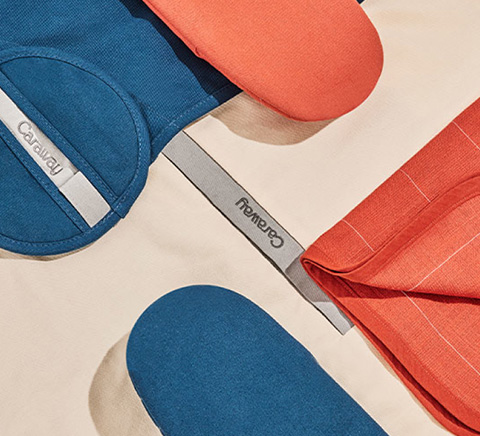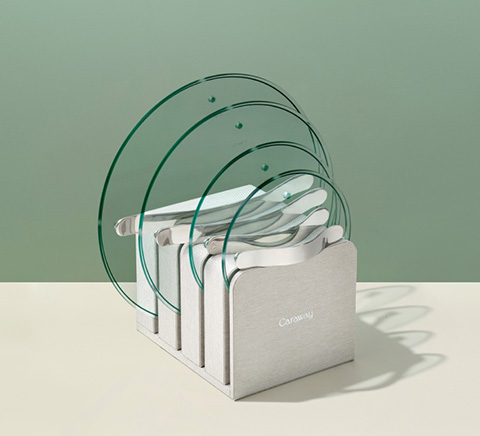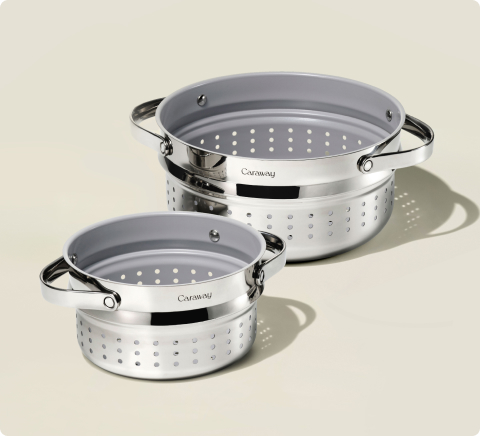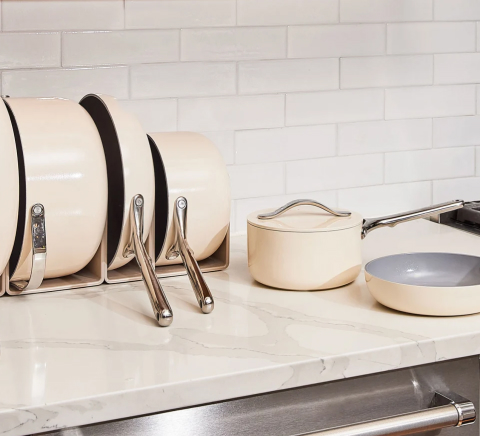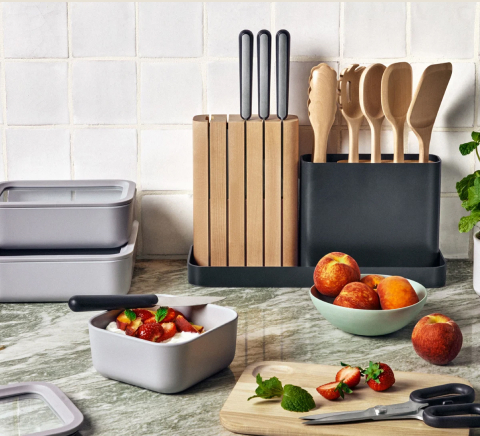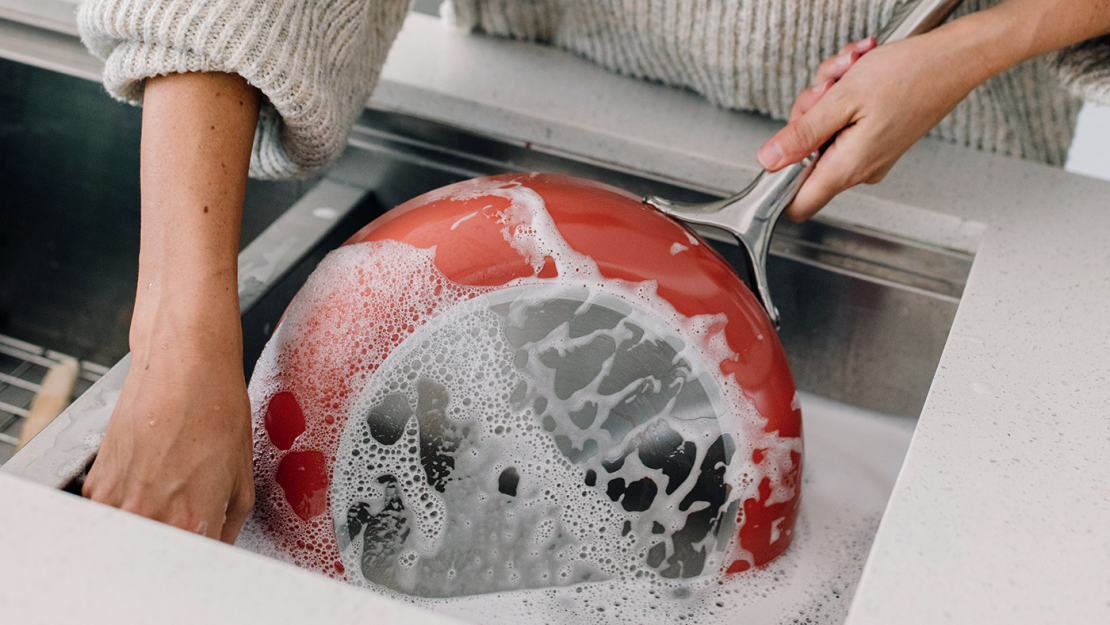One writer puts their Caraway through the wringer with notorious mess-making meals to see just how easy it is to clean the non-stick ceramic surface.
We’re all familiar with the “clean as you go” method, yes? The idea is, if you make an effort to clean while you’re working, you'll spend less time doing it later. Well, as brilliantly as this relates to cooking at home, it’s never been my jam. Sure, I don’t leave food out, and I always put ingredients back where they belong. But many nights, you’ll find my sink stacked with soaking pots and pans because I’m just done in the kitchen. I usually end up tackling them the following morning as I (groggily) wait for my coffee to brew.
In the month I’ve been using my new Cookware Set, my brain has practically been rewired when it comes to what I thought I knew about non-stick cookware. For starters, it works incredibly well and has all but replaced my stainless steel, cast iron, and French enameled cookware. But what’s delighted me the most is how much of a breeze it is to clean. I’ve been particularly surprised after preparing some of my favorite recipes that are notorious for being annoying mess-makers.
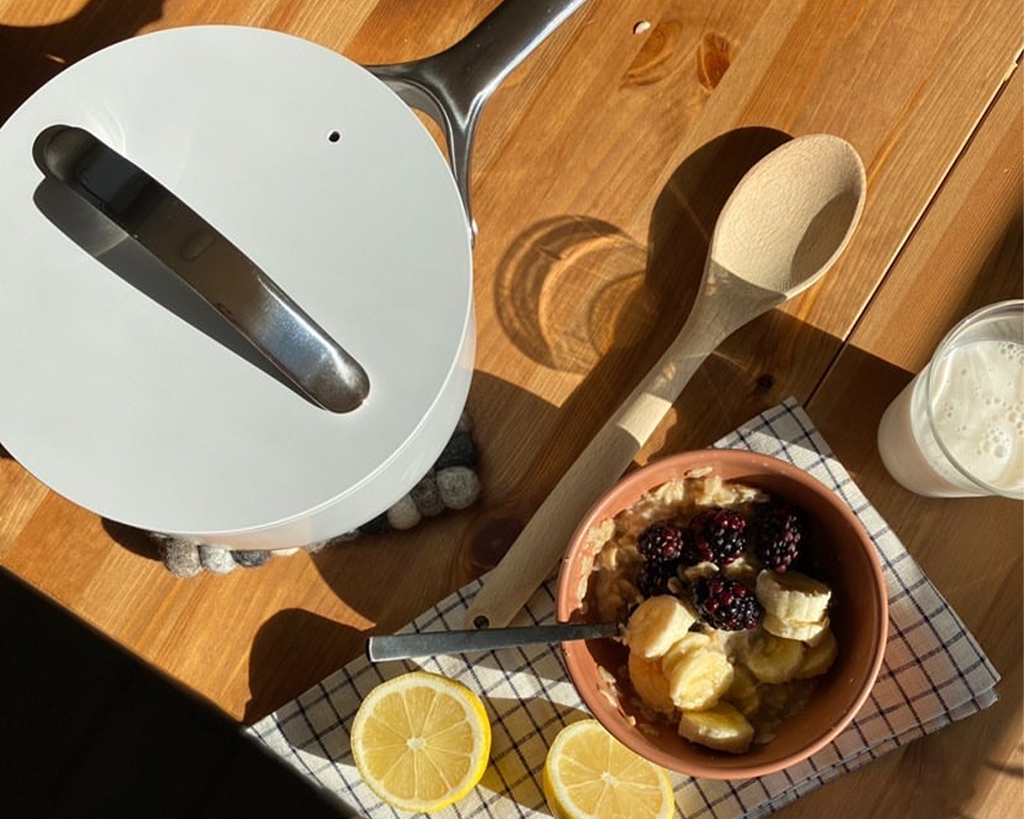
First offender: oatmeal. I can never seem to control the heat on my gas burner to avoid a major boil-over, and super starchy grains like oatmeal and rice leave behind a stodgy, almost glued-on substance. Especially if you forget to set a timer and end up with burnt-on, crusty bits on the bottom of your pan. Whoops. Whenever I make oatmeal, I’m so thankful that seemingly every surface of my Sauce Pan is non-stick. Yes, even the exterior and the lid! This makes it super easy to clean, boil-overs and all.
Next up, cooking steaks, chops, or fatty fish. I’m no professional, but I did pick up a thing or two in culinary school, one being that meat is best seared on the stove and finished in the oven. You’ve never done that in a non-stick pan before, have you? I hadn’t either. If you’ve ever tried this method with stainless steel, like me, you’re left with speckles of burnt-on fat around the lip, and browned bits stuck to the pan. Soap and water alone won’t cut it, and I usually resort to using a steel wool scrubber (after a mandatory overnight soak, of course).
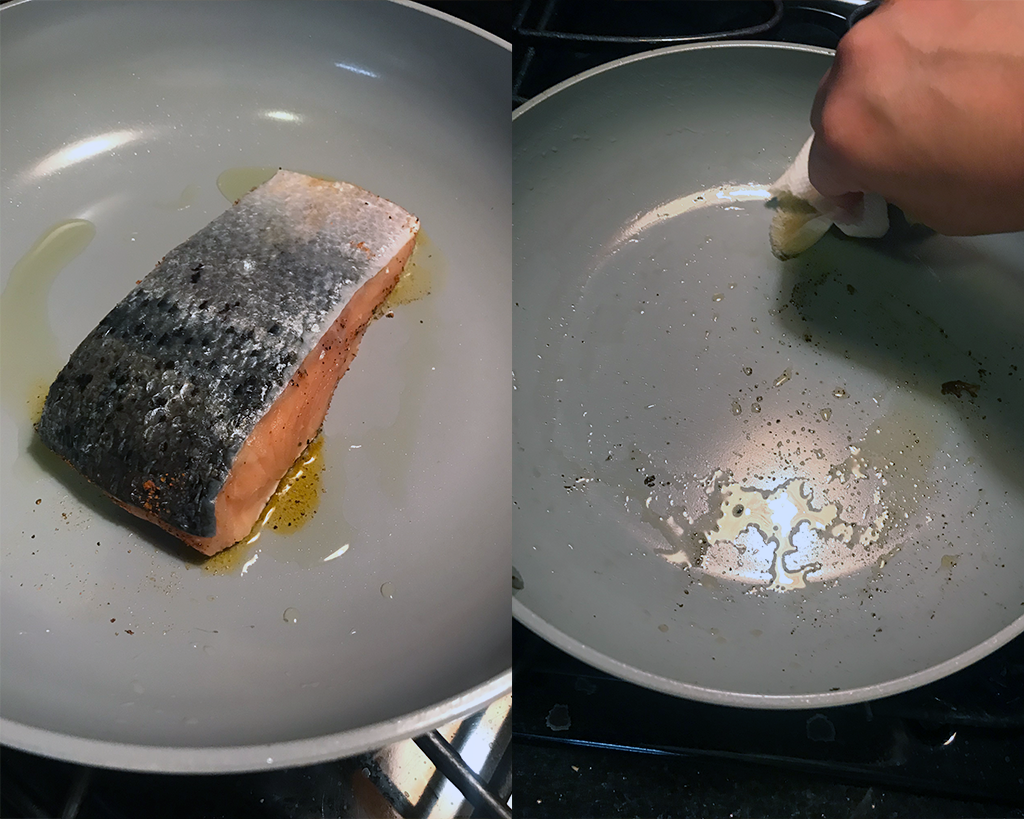
I’ve made my go-to weeknight salmon recipe a bunch in the Fry Pan, and each time the pan wipes clean with a paper towel. After it’s fully cooled, I just use a sponge and mild dish soap to give it one final sparkle.
Finally, the trifecta: a fatty, cheesy, starchy masterpiece. Namely, risotto or cheese-heavy pasta dishes. I use the Sauté Pan because it holds a lot, which is good, because sometimes I add two cups of cheese (no judging, please). If I were to do the same in my enameled braiser, it would take a long soak in the sink or a stovetop simmer to loosen things up. My cheesy recipes practically slide out of the Sauté Pan, so a quick wash is all that’s needed.
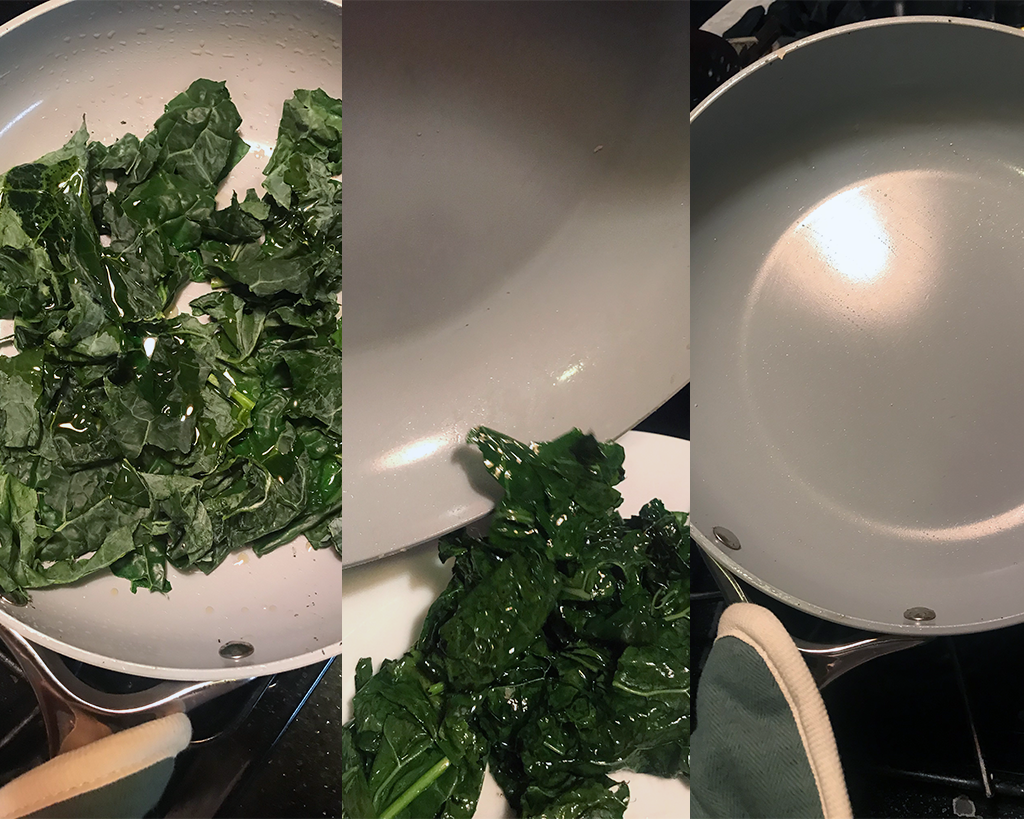
The takeaway? My post-dinner cleaning routine is so short these days, I’ve been waking up to an empty sink every morning. And my coffee is once again getting the attention it deserves.
